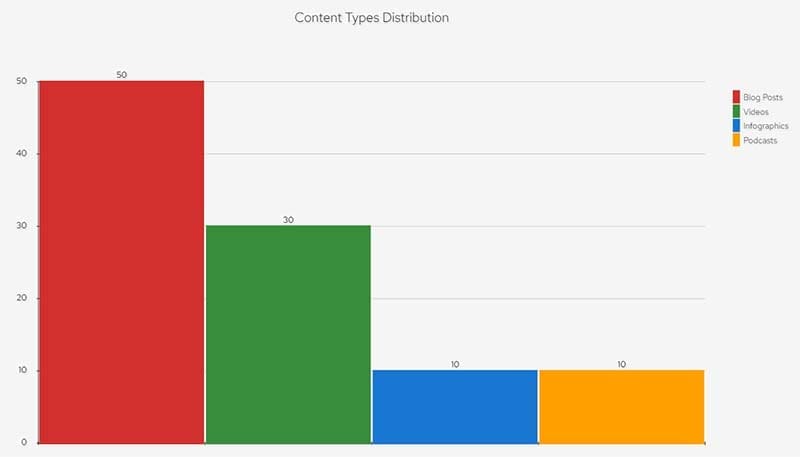What to Include in a Local Content Strategy
In the digital age, where content is king and attention spans are dwindling, knowing what to include in a local content strategy is no longer a luxury—it’s a necessity. But how do you navigate this complex landscape to create a strategy that not only captures attention but also drives tangible results? The answer lies in a meticulous approach that starts with defining clear objectives and ends with continuous refinement based on real-world data. This comprehensive guide aims to demystify the process, offering actionable insights and tailored strategies to elevate your brand in the local market. Whether you’re a small business looking to make a big impact or an established brand aiming to maintain its edge, understanding the nuances of content strategy is your secret weapon for success.
Understanding the Purpose
Defining the objectives and goals of your content strategy is a crucial step in ensuring its success. By clearly outlining what you hope to achieve, you can align your efforts with the overall purpose of your organization or brand. This involves understanding the needs and expectations of your target audience, as well as identifying key performance indicators that will measure the effectiveness of your content.
When defining objectives for your local content strategy, it’s important to consider both short-term and long-term goals. Short-term goals may include increasing website traffic or engagement on social media platforms, while long-term goals could focus on building brand authority or generating leads. These objectives should be specific, measurable, achievable, relevant, and time-bound (SMART), allowing you to track progress and make necessary adjustments along the way.
Moreover, defining clear objectives helps guide decision-making throughout the content creation process. It provides a framework for determining which topics to cover, what formats to use (such as blog posts or videos), and how to prioritize resources effectively. Additionally, having defined goals allows you to communicate expectations with stakeholders involved in creating or reviewing content so that everyone is working towards a common vision.
By establishing objectives and goals for your content strategy early on, you lay a solid foundation for success. This clarity enables you to create targeted and valuable content that resonates with your audience while driving desired outcomes for your organization or brand.
Identifying Target Audience

By analyzing and segmenting your audience, you can unlock the key to developing an effective content strategy.
Analyzing and segmenting the audience is a crucial step in developing an effective content strategy. By understanding who your target audience is, you can tailor your content to meet their specific needs and preferences. This involves gathering data on demographics, interests, behaviors, and other relevant factors that define your audience.
One way to identify your target audience is through market research. This can involve conducting surveys or interviews, analyzing social media data, or studying industry reports to gain insights into the characteristics of your potential customers. By collecting this information, you can create buyer personas that represent different segments within your target audience.
Segmenting your audience allows you to create more personalized and targeted content. Instead of trying to appeal to a broad range of people with generic messaging, you can develop content that speaks directly to the unique challenges and interests of each segment. For example, if you have identified one segment as young professionals looking for career advice, you can create articles or videos specifically addressing their needs and aspirations.
Effectively analyzing and segmenting your target audience ensures content resonance.
By analyzing and segmenting your target audience effectively, you can ensure that every piece of content you produce resonates with its intended recipients. This not only helps build trust and engagement but also increases the likelihood of achieving desired outcomes, such as increased website traffic or conversions. So take the time to understand who your audience is and how best to reach them – it will pay off in terms of creating valuable connections with those who matter most for the success of your business.
Conducting a Content Audit
Evaluating existing content is a crucial step in developing an effective content strategy. Conducting a content audit allows you to assess the quality, relevance, and performance of your current content. By identifying gaps and areas for improvement, you can ensure that your future content meets the needs and expectations of your target audience.
During a content audit, it is important to review each piece of existing content thoroughly. Consider factors such as accuracy, readability, organization, and overall effectiveness in delivering the intended message. Look for any outdated or irrelevant information that may need to be updated or removed entirely.
In addition to evaluating the individual pieces of content, it is also essential to analyze how they fit into your overall strategy. Identify any gaps where certain topics or formats are lacking representation. This will help you prioritize future content creation efforts and ensure that all relevant subjects are covered adequately. Furthermore, by examining metrics such as page views, engagement rates, and conversion rates associated with each piece of content, you can gain insights into what types of articles or formats resonate best with your audience.
Keyword Research

Evergreen Content versus New Trending Topics
Identifying relevant keywords is a crucial step in optimizing content for search engines. By understanding the specific words and phrases that users are searching for, you can tailor your content to align with their intent and increase its visibility in search engine results pages (SERPs). Keyword research involves analyzing search volume, competition, and relevance to identify the most valuable keywords for your content.
One important aspect of keyword research is balancing high search volume and low competition. While it may be tempting to target highly popular keywords with thousands of searches per month, they often come with fierce competition from other websites. Instead, consider targeting long-tail keywords – longer, more specific phrases – that have lower search volumes but also less competition. These niche keywords can still attract highly targeted traffic and improve your chances of ranking higher in SERPs.
Another key consideration during keyword research is relevance. Choosing keywords that accurately reflect the topic or theme of your content. This ensures that you’re attracting the right audience who will find value in what you have to offer. Utilize tools like Google Keyword Planner or SEMrush to discover related terms and variations of your chosen keywords, helping you expand your reach while maintaining relevancy.
By conducting thorough keyword research and strategically incorporating these identified terms into your content, you can enhance its optimization for search engines. Remember to regularly revisit this process as trends change over time so that you stay up-to-date with current user behavior patterns on search engines.\n
Developing a Content Calendar

The distribution of different types of content.
One crucial aspect of a successful content strategy is developing a content calendar. This involves planning and organizing the creation and publication schedule for your content. By establishing a clear timeline, you can ensure that your content is consistently produced and delivered to your audience promptly.
A well-designed content calendar allows you to maintain an organized approach to creating and publishing content. It helps you avoid last-minute scrambling and ensures that each piece of content receives the necessary attention it deserves. With a calendar in place, you can plan ahead, allocate resources effectively, and stay on track with your overall marketing goals.
When developing a content calendar, it’s important to consider factors such as seasonality, industry trends, holidays, or any other relevant events that may impact your target audience. By aligning your content with these considerations, you can create timely and engaging pieces that resonate with your audience at the right time. Additionally, having a planned schedule allows for better collaboration among team members involved in the creation process while also providing transparency across departments within an organization.
Creating Engaging Content

Target Audience Demographics
Crafting engaging content is crucial for capturing the attention and interest of your target audience. By understanding their needs, preferences, and pain points, you can create content that resonates with them on a deeper level. This involves conducting thorough research and gathering insights to ensure your content delivers value and meets their expectations.
One effective way to craft compelling content is by telling stories. Stories have been used for centuries to captivate audiences and evoke emotions. By incorporating storytelling techniques into your content, you can make it more relatable, memorable, and impactful. Whether it’s sharing personal experiences or using fictional narratives to illustrate key points, storytelling adds depth and authenticity to your message.
Additionally, creating valuable content requires addressing the specific challenges or questions your audience may have. Providing practical tips, expert advice, or step-by-step guides can position you as a trusted source of information in your industry. Focus on delivering actionable insights that empower your audience to solve problems or improve their lives somehow. When you consistently provide value through your content, you build trust with your audience and establish yourself as an authority in the field.
By crafting engaging content that speaks directly to the needs of your target audience while incorporating storytelling techniques and providing valuable insights, you can effectively capture their attention and keep them coming back for more. Remember to continuously evaluate the performance of your content strategy through data analysis so that you can refine it based on feedback from your audience. With time and effort invested in creating compelling content tailored specifically for them, you will be able to meet their expectations while achieving success in reaching wider audiences online

Using text and images to create engaging content with memes.
Incorporating Visual Elements
Enhancing content with visual elements is a powerful way to capture the attention of your audience and make your message more engaging. Images, videos, infographics, and other visual elements can help convey information in a visually appealing and memorable way.
Visual elements not only break up the text but also provide additional context and support for the content. They can help illustrate complex concepts or data, making it easier for readers to understand and retain information. By incorporating relevant images or videos into your content, you can create a more immersive experience that resonates with your audience.
Infographics are another effective visual element that presents information in a visually compelling format. They combine visuals with concise text to communicate key points quickly and effectively. Infographics are particularly useful when presenting statistics or step-by-step processes as they simplify complex ideas into digestible chunks of information.
By incorporating these visual elements into your content strategy, you can enhance the overall quality of your content while keeping readers engaged. Whether it’s through captivating images, informative videos, or interactive infographics, visual elements play an essential role in creating compelling and memorable content experiences for your target audience.
Promoting Content
Promoting content is a crucial aspect of any successful content strategy. Once you have created valuable and engaging content, it’s important to strategize ways to distribute and amplify it through various channels. This involves utilizing different marketing techniques and platforms to reach your target audience effectively.
One effective way to promote your content is through social media channels. With the widespread use of platforms like Facebook, Twitter, Instagram, and LinkedIn, you can leverage these networks to share your content with a large audience. By creating compelling posts that include snippets or highlights from your content and an eye-catching image or video, you can capture users’ attention and encourage them to click on the link leading back to your website or blog.
Another method for promoting your content is through email marketing campaigns. Building an email list allows you direct access to individuals interested in receiving your updates. By sending out regular newsletters or targeted emails that feature links to your latest articles or blog posts, you can drive traffic directly back to your website while also nurturing relationships with potential customers.
Additionally, collaborating with influencers in your industry can greatly enhance the promotion of your content. Influencers are individuals who have a significant following on social media platforms or influential blogs within specific niches. By partnering with these influencers and having them share or endorse your content, you can tap into their existing audience base and gain exposure among people who are already interested in topics related to your offer.
In conclusion
Analyzing and Measuring
Monitoring content performance and using data to make informed decisions is a crucial step in any content strategy. By analyzing the performance of your content, you can gain valuable insights into what works and what doesn’t, allowing you to make data-driven decisions for future improvements.
One way to monitor content performance is by tracking key metrics such as page views, bounce rate, time on page, and conversion rates. These metrics provide quantitative data to help you understand how well your content resonates with your audience. By regularly reviewing these metrics, you can identify patterns or trends that may indicate areas for improvement or success.
In addition to quantitative data, it’s also important to gather qualitative feedback from your audience. This can be done through surveys, comment sections, or social media engagement. By listening to what your audience says about your content, you can gain valuable insights into their preferences and interests. This feedback can then be used to refine and tailor your content strategy accordingly.
By consistently monitoring and analyzing the performance of your content using both quantitative and qualitative data, you can make informed decisions that will drive the success of your overall content strategy. Whether it’s adjusting topics based on popularity or optimizing formats based on engagement levels, leveraging data allows you to continually improve and deliver high-quality content that resonates with your target audience.
Iterating and Improving

Continuously evaluate and adjust your approach to ensure that it aligns with your goals.
Continuously refining the content strategy is a crucial step in ensuring its effectiveness and relevance. By analyzing insights and feedback, you can identify areas for improvement and make necessary adjustments to optimize your content. This iterative process lets you stay aligned with your audience’s needs and preferences.
One way to refine your content strategy is by closely monitoring its performance metrics. Analyzing data such as website traffic, engagement rates, and conversion rates can provide valuable insights into what works well and what needs improvement. For example, if certain types of content consistently receive high engagement or lead to conversions, you may want to focus more on creating similar content in the future.
Feedback from your audience is another valuable resource for iterating and improving your content strategy. Actively seeking feedback through surveys, comment sections, or social media interactions can help you understand how well your content resonates with your target audience. Paying attention to their suggestions or criticisms can guide you in making necessary changes that align with their expectations.
By continuously iterating and improving upon your content strategy based on insights gained from data analysis and feedback from your audience, you can ensure that it remains relevant, engaging, and effective over time. This ongoing refinement process allows you to adapt to changing trends or preferences while maintaining a strong connection with your target audience.
Conclusion
In today’s inundated world of information, it is increasingly difficult to set oneself apart. Yet, the power of a well-crafted content strategy allows you to break through the noise and connect with your audience on a meaningful level. From defining razor-sharp objectives to leveraging data for ongoing refinement, each step is a building block toward creating a compelling digital narrative. It’s not just about what you say; it’s about delivering the right message to the right people at the right time. And in the ever-evolving landscape of digital marketing, staying static is not an option. Continuous iteration, fueled by data and feedback, ensures that your strategy remains agile and aligned with your audience’s needs. So, as you venture into the realm of content creation and promotion, remember that your strategy is a living, breathing entity that thrives on adaptability and innovation. Embrace the journey, and watch your brand resonate more deeply than ever before.
By adopting this holistic approach, you’re not just ticking off boxes; you’re building a sustainable, data-driven strategy that can adapt and thrive in the digital age. It’s about empowering your brand to compete and excel, turning your online presence into a digital storefront that’s open 24/7 and resonates with your ideal audience. So let’s embark on this transformative journey together, leveraging the full potential of content strategy to elevate your brand to new heights.



